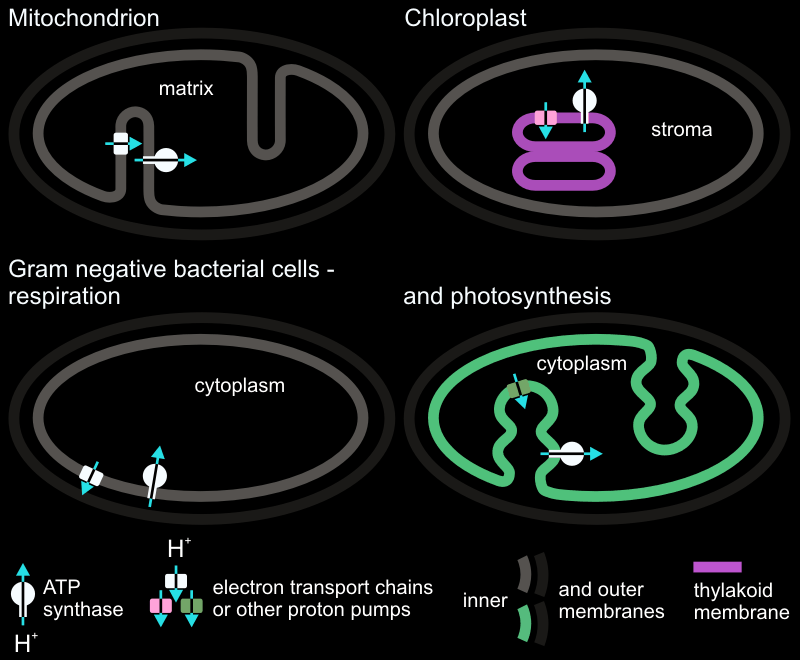Understanding molecular nature of life is not easy without informative scientific visualizations. Distillation of this rich body of information generated over decades or even century long research into a visual medium can be key to grasp complexities of subcellular structures. Take the Central Dogma of biology for instance. The Central Dogma animation distills more than half a century of intense laboratory research that started with Rosalind Franklin and Raymond Gosling’s extraordinarily historic X-ray diffraction photograph in 1952. Photo 51 was a major guiding evidence in biology which paved the way to the revelation of the structure of the DNA molecule.
Here HarvardX/Biovisions collaboration brings us an essential multi-complex unit the Electron Transport Chain found on mitochondrial and photosynthetic membranes. Four complexes (I-II-III-IV) work together with ATP Synthase/ATPase enzyme to generate ATP as a universal energy storing molecule. These complexes can also maintain essential proton gradient inside organelles. In unicellular organisms these complexes can be found on the plasma membranes.
The proton gradient mitochondria maintain can also act as a power source for what biologists call proton uncoupling. Through uncoupling proteins protons can be channeled to flow across the membrane which generates heat. In fact some plants like the skunk cabbage generates so much heat that they melt the surrounding snow in early spring. We still don’t know how the chain of events leading to proton uncoupling is initiated.
Thermogenic properties of some plants intrigued scientists like Lamarck who noticed and described heat generation in some tissues such as the floral spadix. In 1778 Lamarck stated that spadices of plants from the Araceae family were “hot to the point of boiling“. Hundred years later, botanist Eduardo Beccari observed that the Sumatran aroid Amorphophallus titanum had the same thermogenic properties. Today we know that this extraordinary ability is possible due to an interesting tweak in the Electron Transfer Chain. The Alternative Oxidase (AOX) enzyme is behind the heat generation trick.
The discovery of electron transport system and ATP generation took almost two decades through a period known as “oxphos wars” short for oxidative phosphorylation. Biochemists of the 1960s and 70s rejected the oxidative phosphorylation idea. They were confident that the mechanism of ATP generation known at the “chemical coupling hypothesis” would be very much like that of the glycolysis. The glycolysis reaction allowed phosphate groups to be transferred from sugar molecules onto ADP to form ATP in a very straightforward manner. The chemistry is very balanced and thus strictly stoichiometric. Similarly, the expectation was for an integer number of ATPs produced per atom of oxygen reduced by NADH or FADH2.
Indeed, contrary to the expectation, experimental measurements carried out on isolated mitochondria reproducibly gave fractional numbers, such as 2.5 ATP per NADH and 1.5 ATP per FADH2 which was rather odd. The oxphos hypothesis proposed a chemiosmotic mechanism for ATP generation also known as proton motive force. Chemiosmotic coupling allowed varying ratios of ATP for each oxygen atom reduced which can differ from one organism to another depending on type of the ATP synthase.
The convoluted history of chemiosmosis/proton gradient discussion took a favorable turn after a landmark publication by Mitchell in 1961 which explained oxidative and photo-phosphorylation mechanism. Now we know that ATP generation is a result of electron and hydrogen flow through an organized chain of respiratory complexes ultimately catalyzed by ATPase.
A virtual tour of a cell
Mitochondria: the cell’s powerhouse
ATP synthase in action



0 Comments
You can be the first one to leave a comment.